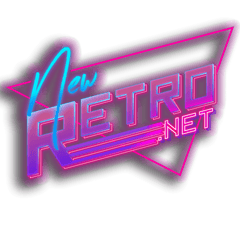Hip-Hop Influence on Streetwear
How Did Hip Hop Affected Streetwear
Hip-hop culture has had the greatest effect on road culture, educating a lot of the style patterns and apparel marks that rose to unmistakable quality. In only a couple of decades, it advanced from periphery subculture to the most overwhelming power in popular culture.
In '70s New York, hip-hop was conceived as a response to disco culture. Caribbean workers and African-American youth in disappointed neighborhoods started meeting up for extemporaneous square gatherings in districts like the Bronx. Early pioneers like DJ Kool Herc, Grand Wizzard Theodore, and Grandmaster Flash began the act of utilizing two turntables to expand the move break in funk and soul records — making a consistent sound circle perfect for moving to perpetually. The "breakbeat" shaped the foundation of hip-hop music and later prompted the act of inspecting existing music to make something new, adding diverse tracks and instruments to change the first piece into a fresh out of the box new tune.
Musical Way of Influence
The musical conveyance of rapping originated from the act of "topping," where two men would contend with their words over a mouthpiece and prevail upon the group of onlookers. The term emcee originated from the conventional abbreviation "MC," short for Master of Ceremonies. Prior to rappers, the MC's job was to publicity up the group of onlookers between a DJ's melodies and urge them to move. Early hip-hop culture was contained four components: rapping, DJing, spray painting composing, and breakdancing, a physically difficult move structure that created during the '80s, including gymnastic moves, for example, headspins, windmills, and styles, just as popping and bolting, which depended more on exact body developments.
In the incipient long periods of hip-hop, picture takers, for example, Jamel Shabazz, Martha Cooper, and Henry Chalfant recorded the way of life's ascent in New York's internal urban areas. B-young men and b-young ladies wore adidas tracksuits and straight-legged denim over Puma Suede tennis shoes or adidas Superstars modified with fat bands. Kangol pail caps and Cazal shades were ordinary, and in the winter, the time had come to whip out a shearling coat or calfskin jacket. Adornments and chains turned into a noticeable flex on your friends, and no other rapper exemplified that more than Slick Rick.
Rick the Ruler's affinity for layered chains, rings, and self-maintained love for Bally shoes and Kangol caps are communicated in his 1985 melody with Doug E. New, "La Di Da Di." From the begin, this is the thing that isolated hip-hop from its stone and-move forerunners. Developments like punk were established on hostile to mold goals and remained rather than utilization and free enterprise. Hip-hop completely grasped it from the begin, seeing taking on the appearance of its own opposition — and each rapper flaunted he dressed superior to the rest.
Ironicallly, rappers weren't the first hip-hop style symbols; it was the street pharmacists who really had the cash and top of the line gear most rappers melodiously boasted about. An extraordinary part of the hip-hop uniform is educated by what street pharmacists wore. During a time before streetwear boutiques, you had sportswear stores and old fashioned suppliers that sold shoes and workwear items like Carhartt errand coats and Timberland boots — unpleasant things that could withstand a New York winter or multi day spent hustling on the square. Be that as it may, in the event that you truly needed to get new, there was one individual you needed to see: Harlem tailor Dapper Dan.
Visit Newretro.Net for the affordable Streetwear Outfits!








Leave a comment